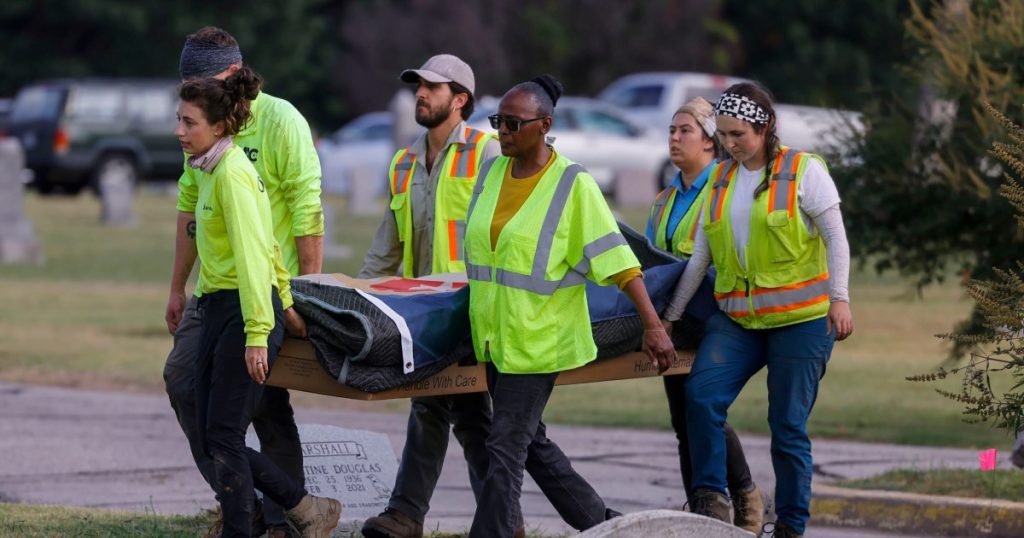The latest search for the remains of victims of the 1921 Tulsa Race Massacre in Oklahoma City has ended with the discovery of three sets containing gunshot wounds, according to investigators. A total of 11 sets of remains were exhumed during the latest excavation, with two gunshot victims displaying evidence of munitions from two different weapons, and the third individual showing evidence of burning. Forensic anthropologists on site will examine the remains, with further analysis to be conducted at Intermountain Forensics in Salt Lake City through DNA and genealogical testing to identify the victims.
The search for simple wooden caskets used to bury massacre victims was based on descriptions found in historical records such as newspaper articles, death certificates, and funeral home records. The remains found during previous excavations were identified as World War I veteran C.L. Daniel from Georgia, who did not exhibit any signs of gunshot wounds. The search for victims is the fourth since Tulsa Mayor G.T. Bynum initiated the project in 2018, with a total of 47 remains now exhumed. Bynum expressed his hope that the search for victims will continue, regardless of who the next mayor may be, emphasizing the importance of bringing justice to those who were murdered and hidden over a century ago.
Investigations are ongoing to map the graves in an effort to determine whether further searches should be conducted. The cumulative data from the investigation has confirmed that individuals fitting the profile of massacre victims have been found. Plans for additional excavations will be made based on this information in order to uncover more victims who were brutally murdered and hidden. Brenda Nails-Alford, a descendant of massacre survivors and a member of the committee overseeing the search, expressed gratitude for Bynum’s efforts to find the victims’ remains and hopes that the search continues to bring justice and healing to the community.
A new committee has been established to study possible reparations for survivors and descendants of the massacre, as well as for the area of north Tulsa where the violent event occurred. The massacre, which occurred over two days in 1921, was a long-suppressed episode of racial violence that destroyed the thriving community of Black Wall Street. As many as 300 Black people were killed, thousands were forced into internment camps supervised by the National Guard, and more than 1,200 homes, businesses, schools, and churches were destroyed. The search for victims and efforts towards reparations are aimed at addressing the deep scars that still linger in the community and providing a path towards healing and justice for the victims and their descendants.


